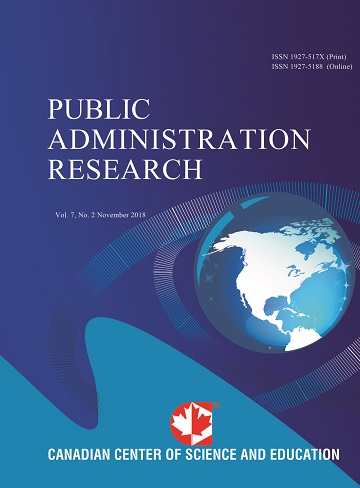Understanding CEO Role Perception and Time Usage: Are New Municipal Typologies Useful?
- Robert Eskridge
Abstract
In recent years local government scholars have sought to more explicitly describe the diverse structures that exist within municipalities by developing typologies that extend beyond the traditional mayor-council versus council-manager form definitions. This research explores the value of these new typologies in helping scholars explain differences among chief executive officers (mayors and city managers) in municipalities. Using information obtained from a national random survey of municipalities, this study evaluates two of the most developed new typologies along with the traditional mayor-council versus council-manager classification in terms of how officials allocate their work time and how municipal mayors and city managers perceive both their own and their city councils role in the council/executive relationship. Using the percentage of work time allocated to the “Policy”, “Politics”, and “Management” activities as describe by Ammons and Newell in their 1987 Public Administration Review study (Role Emphases of City Managers and Other Municipal Executives) and the role perceptions of mayors and city managers using the four role dimensions of “Mission”, “Policy”, “Administration”, and “Management” described in the Dichotomy/Duality model developed by James Svara in his 1985 Public Administration Review article “Dichotomy and Duality: Reconceptualizing the Relationship Between Policy and Administration in Council-Manager Cities”, the differences between and among chief executive officers (CEO) are exaimined. We find that differences do exist between mayor and city manager CEOs and that by using new typologies, differences within mayors in mayor-council cities exist but do not exist among city managers in council-manager cities.
- Full Text:
 PDF
PDF
- DOI:10.5539/par.v3n1p52
Journal Metrics
h-index (2017): 7
i10-index (2017): 6
h5-index (2017): 7
h5-median (2017): 13
Index
- CNKI Scholar
- COPAC
- CrossRef
- DTU Library
- EBSCOhost
- EuroPub Database
- Excellence in Research for Australia (ERA)
- Genamics JournalSeek
- Ghent University Library
- Google Scholar
- Harvard Library
- Infotrieve
- Jisc Library Hub Discover
- LOCKSS
- Mir@bel
- Norwegian Centre for Research Data (NSD)
- Open J-Gate
- PKP Open Archives Harvester
- Publons
- ROAD
- Scilit
- SHERPA/RoMEO
- Stanford Libraries
- Ulrich's
- UniCat
- Universe Digital Library
- UoS Library
- WorldCat
Contact
- Gabriel TaiEditorial Assistant
- par@ccsenet.org
